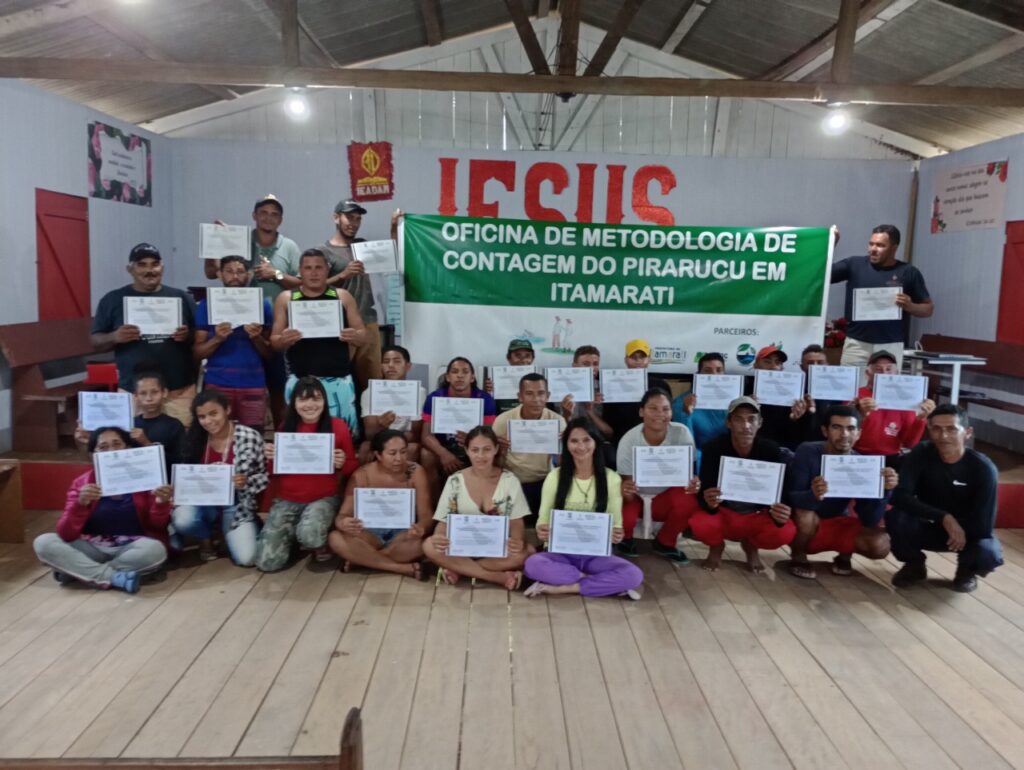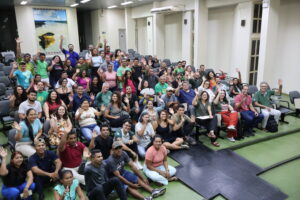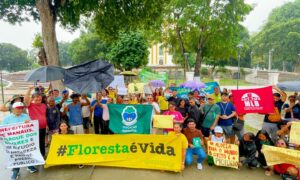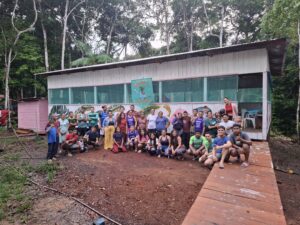An Arapaima counting methodology course empowers communities in Itamarati regarding the sustainability of the species’ production chain and community development in the region.
By Maria Cunha
Translated by Laiane Lessa
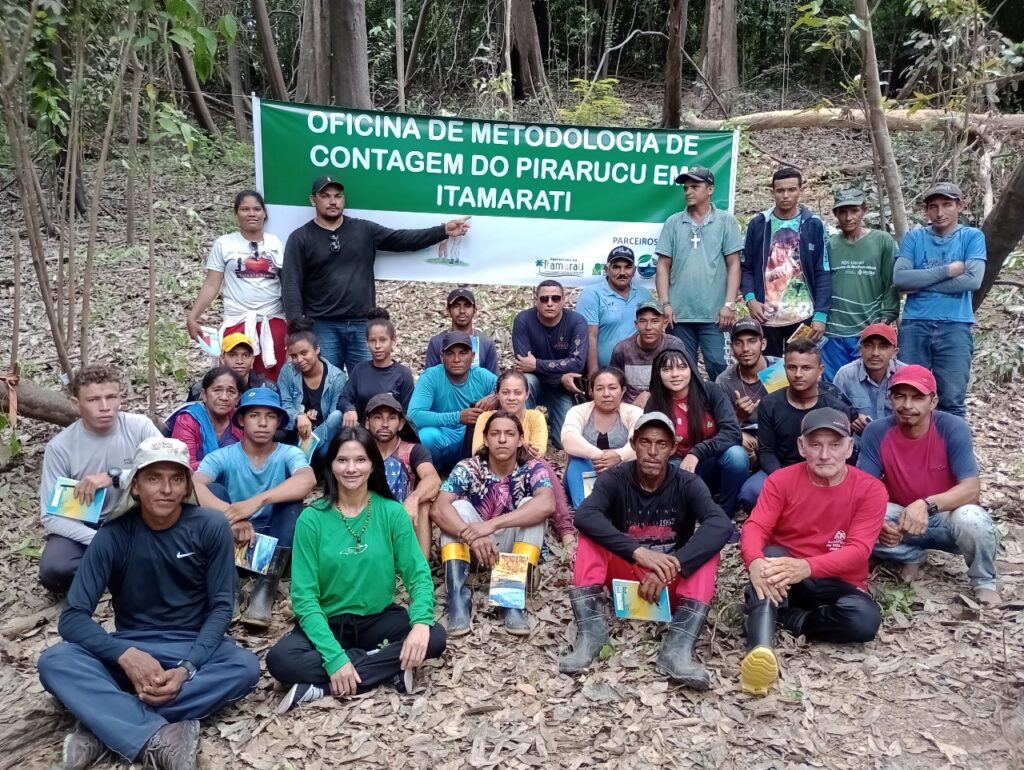
The arapaima (Arapaima gigas) also known as the ‘Giant of the waters’ is a freshwater fish that can reach impressive sizes, weighing over 200 kg. The arapaima counting is an important practice for the preservation and sustainable management of this species. To enable sustainable fishing, it is necessary to count the population of fish living in the lakes, as it is from this count that Ibama will determine the caught quota, ensuring that a sufficient amount of fish remains in the environment for repopulation.
It is crucial for communities to receive training for this counting. In this regard, arapaima counting methodology courses are a link between the community and the species conservation work, igniting the community’s interest in sustainable management. From August 4ᵗʰ to 6ᵗʰ, 2023, the Instituto Juruá offered an arapaima counting methodology course to communities in the municipality of Itamarati.
The course took place in the Quiriru community, with the participation of 26 students from different communities in the municipality. The Instituto Juruá initiative had indispensable partnerships, including the City Council and the Town Hall of Itamarati, the Municipal Department of Environment of Itamarati (SMMAT), and the Environmental, Extractive, Fisherfolk, and Rural Producers Associations of Itamarati (AAEPPRI).
It was an important experience for the host community as well as for the communities that participated through their representatives. Learning about the arapaima counting methodology is an enriching experience that allows students to acquire valuable knowledge about the biology and behavior of arapaima, as well as specific counting techniques used to monitor its population. In addition to these essential aspects, the course also covered the importance of contributing to the conservation of this iconic fish and understanding its population structure, including distribution by size range, through both theoretical and practical lessons.
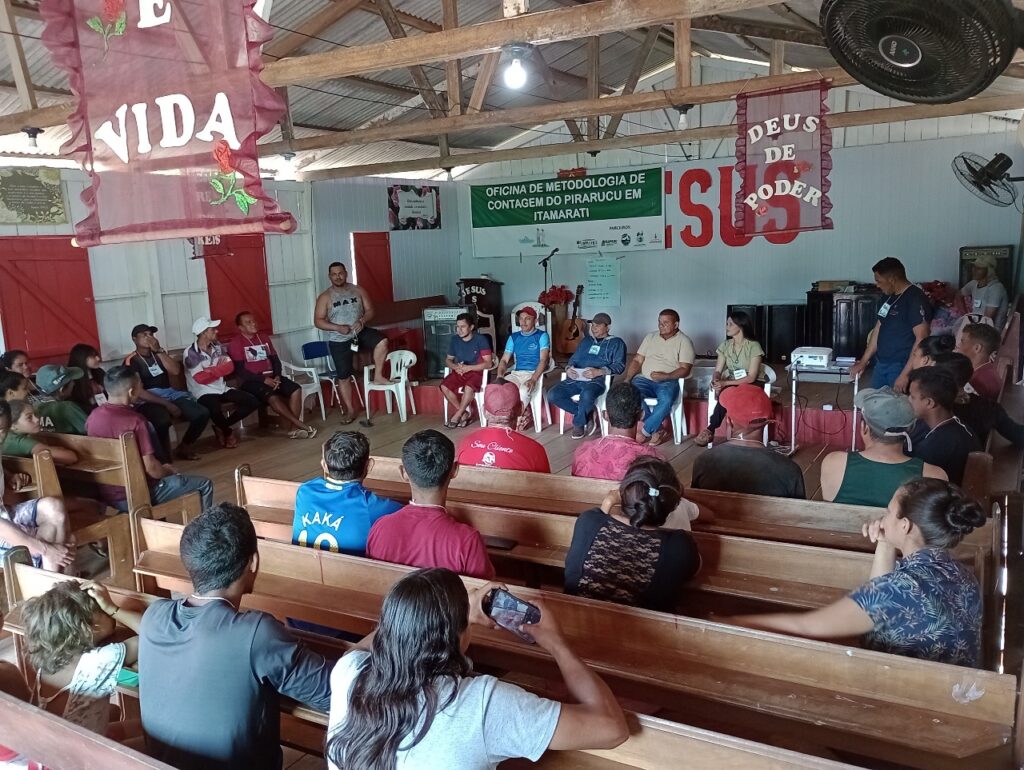
In the municipality of Itamarati, communities are becoming acquainted with the work of species conservation and protection, and it is noticeable the interest among the residents in arapaima populational monitoring. The counting has been underway in the region since 2020 and has transformed residents’ perception of how species sustainability is important for the environment, region and community.
“When I decided to enroll in the arapaima counting methodology course, my goal was to gain a better understanding of this fish and how I could help influence the community in species conservation. I could see the importance of maintaining a protected environment so that arapaima can thrive and bring benefits to the community”, says Cicero Pereira da Silva, resident of Iracema community and a course participant.
Having a better understanding of the arapaima population in a specific environment has brought great enthusiasm to the community members who were able to participate in the course, and it has generated a heightened awareness of care and protection. The fishing agreement in the Itamarati region is in the process of being implemented. However, lake surveillance and monitoring work is already ongoing, and the arapaima counter certification has provided even greater incentive than expected for those who took the course. Many community members feel honored to now be able to contribute more directly to this arapaima conservation work, as they better understand the population monitoring methodology. Thus, the awakening to the sustainability of the species is increasingly becoming a collective activity, empowering communities in their leadership and socialization.
“I see that if we don’t take care of this species and many others, we will lose them. So now, as a counter, I know that I can better observe how the arapaima population in our preserved lake is increasing or decreasing”, says Geovane Sales de Araújo from the Refúgio Community.
The Arapaima counting methodology course also brought social empowerment within the local communities. The exchange of experiences, traditional knowledge, and future perspectives, along with a dialogue about the importance of community leadership participation in this process, sparked interest among community members and students to live this experience and follow the development of the arapaima counting process in the 13 communities of the municipality that have already started the counting process. On this occasion, they put into practice all the knowledge they acquired during the course. It was 17 days of participation alongside the Instituto Juruá team in counting 27 lakes in the region.
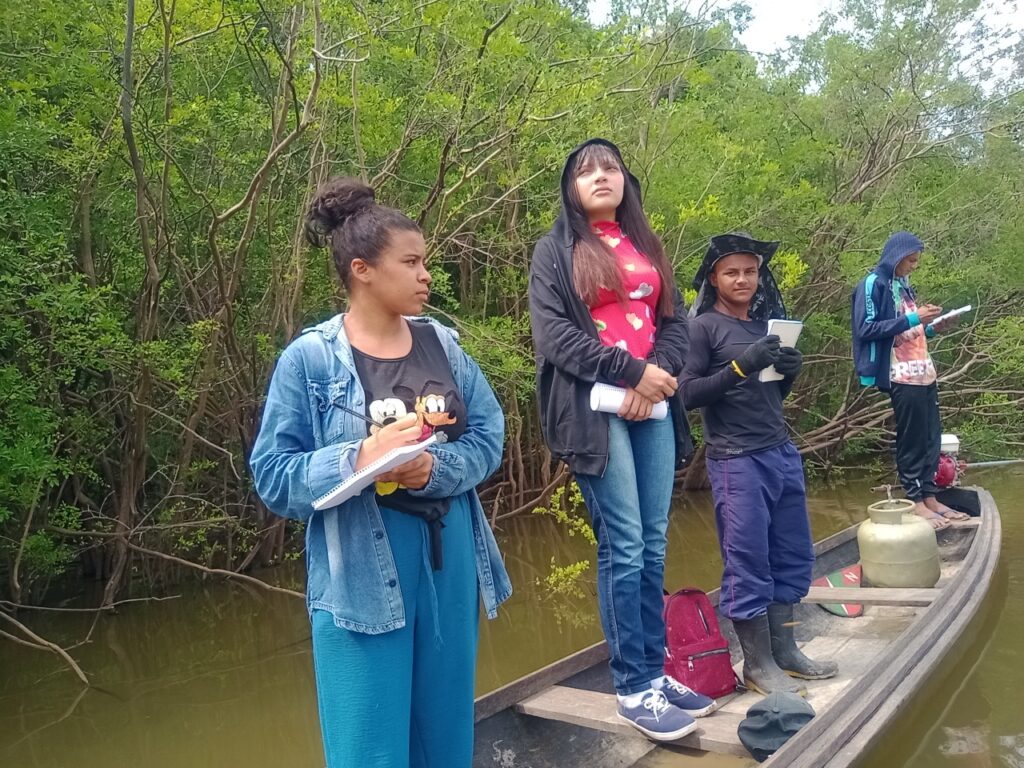
“Every lake we passed was more experience that I could assimilate into my knowledge; it was a great experience for me, as a community member and as a arapaima counter”, says Agna Luma, the new counter from São Brás Community.
“I could see how important the organizational process of this activity is and how much interest needs to come from the community itself. It was very beneficial for me, after the course, to be able to participate in the counting, which is an important step and a practice that was crucial for us to enhance our knowledge acquired during the course”, add, Ana Paula from Igarapé Community.
The interest in experiencing the counting process in different lakes from different communities after the course came from the students themselves. According to their assessment, it was essential for gaining more experience in this activity and improving their practical knowledge taking advantage of the monitors’ presence to ask questions, both theoretical and practical, and exchange information about local and technical knowledge during the journey.
The participation of women in the arapaima chain has increasingly encouraged women to feel empowered to work and also to encourage their communities. During the counting course in the Itamarati region, the interest and encouragement that women are fostering within their communities to change the context of their reality were notable. This ‘opportunity’ was crucial.
“Opportunities like these can make a difference in our lives and in our community, but we need to learn to embrace them and make the most of them. Becoming an arapaima counter, both me and my granddaughter, is already a unique feature for my community,” explains Francisca Alexandrino from Cantagalo Community.
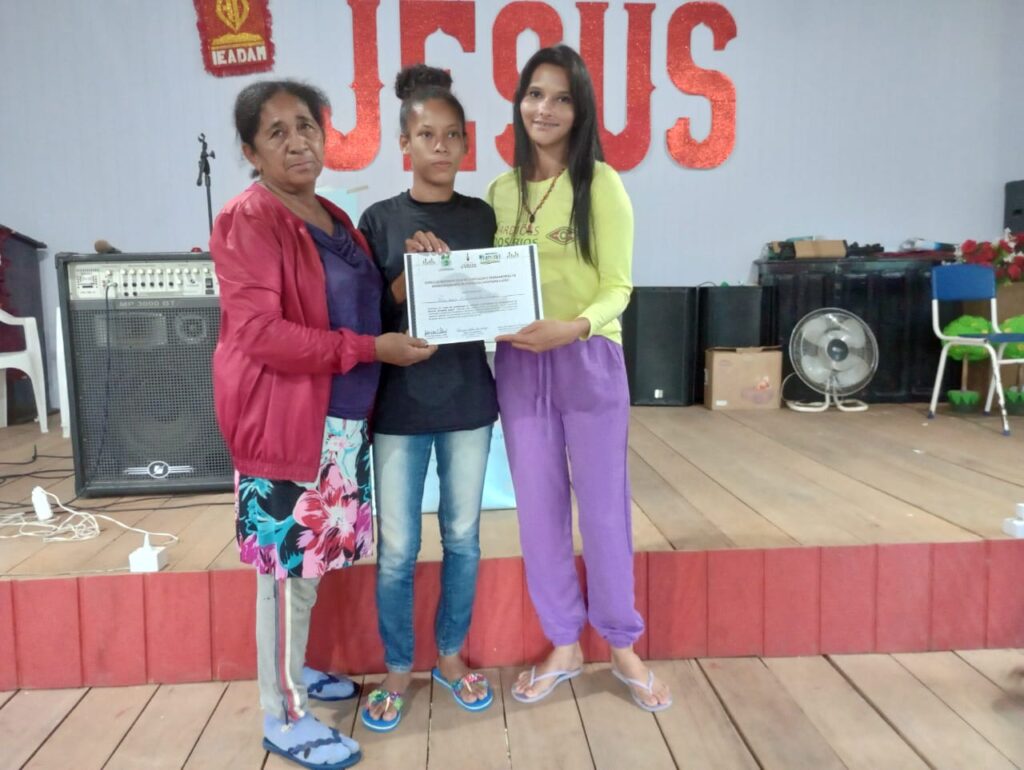
A community organization was one of the most important stages to be addressed, where community members could realize that everything starts from there. The arapaima counting methodology course was not just a learning moment for the students who could participate; it was an exchange of wisdom, knowledge, and crucial information that awakened a more empowered, sustainable, and leadership-oriented perspective in each and every one who attended.
The students achieved a high level of success in the course evaluation, with a 100% approval rate. The team responsible for the theoretical and practical application of the course included certified counters Edimar Costa de Souza, who is a Fisheries Technician at Instituto Juruá, and Raimundo Pires de Medeiros, who has been a technician and arapaima handler for over ten years, along with the participation of Maria Cunha, Sustainable Production Technician, as well as a communicator and educator at Instituto Juruá.
“We feel satisfied for the approval of all participants, and knowing that the daily experiences of traditional practice in the communities is our school of knowledge. We planted a seed of sustainability for a much-loved and conserved species in the Mid-Juruá which was already planted in the region when the communities decided they wanted to monitor the arapaima. We hope that with the enthusiasm this group gained after the course and having followed the entire counting process, this seed will only grow and strengthen in the region”, concludes Edimar Costa.
